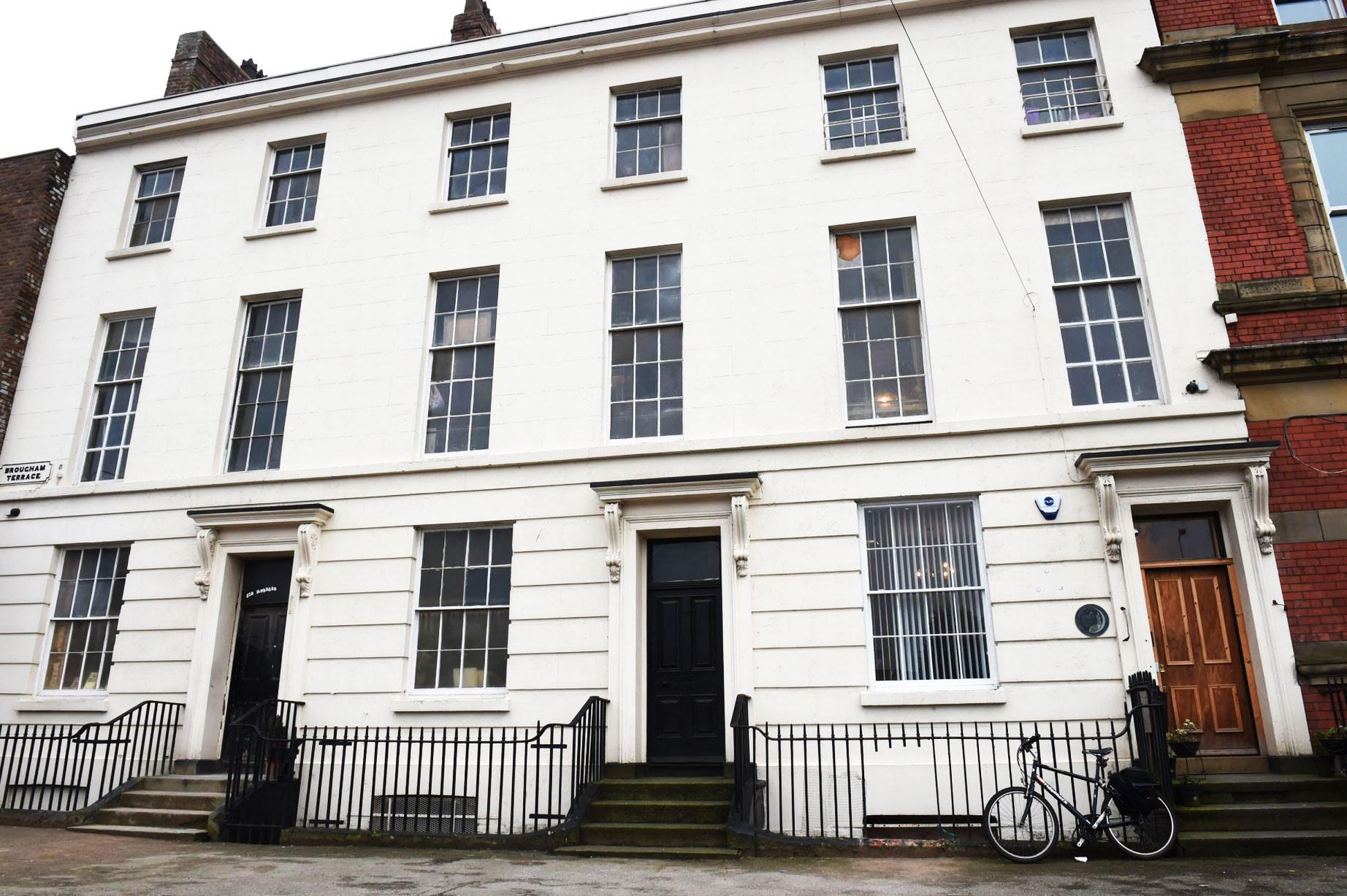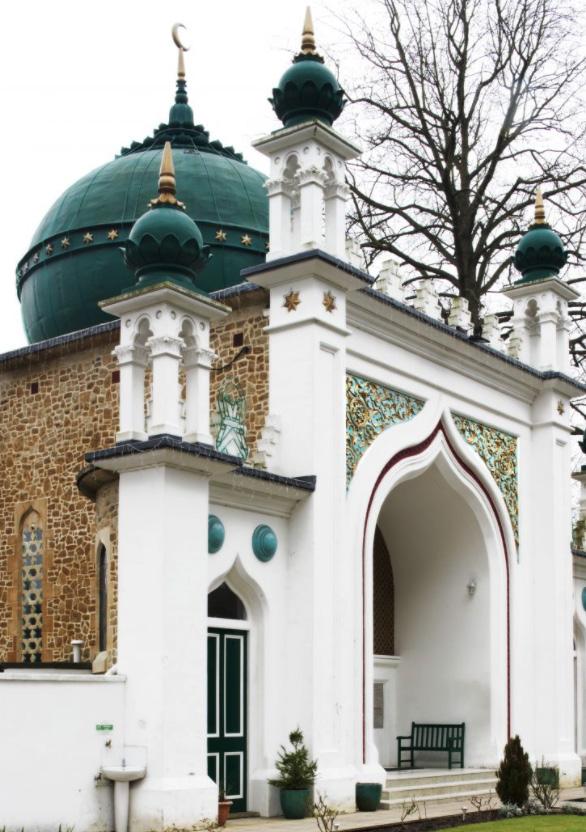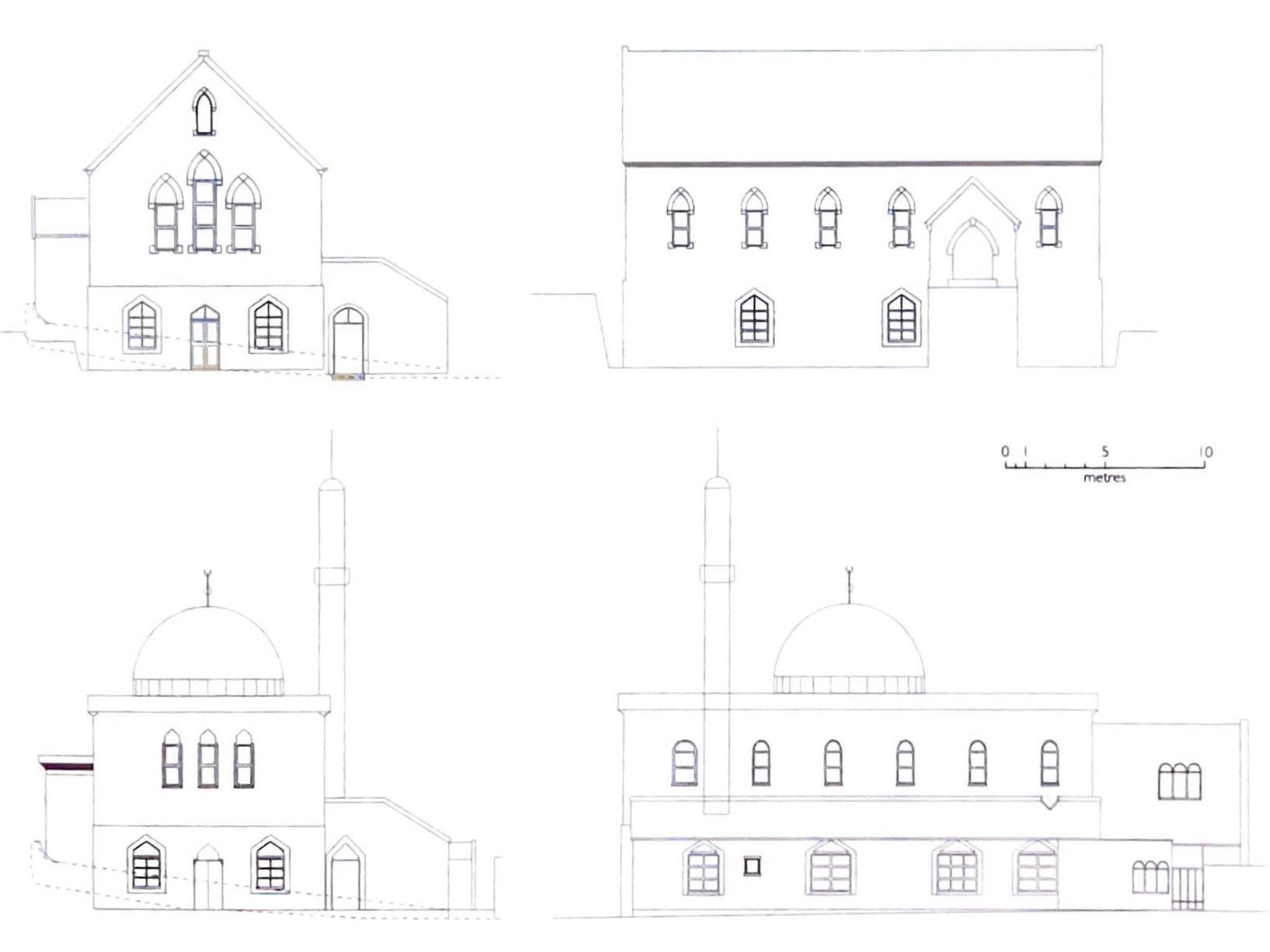
4 minute read
THE FIRST MOSQUES IN BRITAIN
from THE BRITISH MUSLIMS AND THE MOSQUES - An architectural, cultural and theological approach
by abmukadam
FIRST: CONVERTED HOUSE MOSQUE ABDULLAH QUILLIAM MOSQUE, LIVERPOOL (1889)
The first mosque in Britain was established in a Georgian terrace house in Liverpool in 1889. Slight to the contrary, the Liverpool Muslim Institute Mosque was not founded by the Muslim migrant sailors of the late 19th century, but rather by a group of British reverts led by a distinguished local layer, Abdullah William Quilliam.
Advertisement
Following his visits to Morocco, William Henry Quilliam along with his countrymen embraced Islam. Upon his return to Britain, Quilliam founded the Liverpool Muslim Institute Mosque. Very much like the majority of mosques in Britain at present, the Liverpool Muslim Institute Mosque was a conversion of an existing building rather than a purpose-built place of worship. As part of the conversion, a mihrab and a mimbar were added (fig11).
The terrace conversion meant there was no capacity for any external application of an Islamic visual identity nor character. The internal changes were also limited, however they adopted and merged traditional Moroccan and Victorian beautification (fig 12).
The Abdullah Quilliam Mosque highlighted how easy and effective it is to convert any building into a place of worship - into a mosque by simply adding a mihrab, an additional platform for a mimbar, and a place of purification before worship. This conversion process being considerably cost effective, quicker and easier than building a newly designed purpose-built mosque proved to be very popular
within the (poorer) migrant Muslim communities.
This rather cost effective and swift process of converting houses into mosques allowed the early migrant Muslim communities to establish a dedicated place of worship for formal congregational salaah (5 daily prayers) relatively quickly. To this day, this method of converting not only houses, but also warehouses, factories and even churches and pubs into mosques is a popular and preferred option within the less established communities. Once established, the mosque committee will then proceed to amass funds to either renovate the existing buildings towards a more purpose-built place of worship or in some cases even seek to obtain new land and build a new purpose-built mosque.
Figure 11: Abdullah Quilliam Mosque Interior, Liverpool

Figure 12: Abdullah Quilliam Mosque Exterior, Liverpool

THE FIRST MOSQUES IN BRITAIN
FIRST: PURPOSE-BUILT MOSQUE SHAH JAHAN MOSQUE, WOKING (1889)
The first purpose-built mosque in Britain and Northern Europe was commanded by Dr Gottlieb Wilhelm Leitner, a Hungarian Jewish linguist who spent the majority of his working life from 1864 in Lahore (then part of India). Upon his return to Britain, Leitner was eager to establish an educational center in Europe that would celebrate and educate on the culture and history of India as well as the Islamic world. Fortunately for Leitner, the site of the former Royal Dramatic College became available in Woking during the 1880s. Leitner purchased the land and the idea of a mosque and an educational institution was born.
The mosque was funded by the female ruler of the Indian princely state of Bhopal, the Sultan Shah Jahan Begum and the design was produced by the Victorian architect, William Isaac Chambers in the architectural language echoing that of British India and the Mughal era. Built from Bath and Bargate stone, the traditional orientalist design houses an onion dome, miniature minarets, a sahn courtyard as well as geometric Arabic patterns and calligraphic decorations surrounding the entrance as well as the internal coverage of the onion dome (fig 16). The mosque also took the language of the Mughal architectural styles in a rather Gothic style within the portico’s ogee archway and the trefoil arch over the main doorway (fig 13). Another typical Mughal addition is the inclusion of the smaller green domed cupola turrets (fig 14).


Figure 15: Shah Jahan Mosque view from the street, Woking

Figure 16: Shah Jahan Mosque Dome Interior, Woking

THE FIRST MOSQUES IN BRITAIN
NON DOMESTIC CONVERSION MOSQUE BRISTOL JAMIA MOSQUE, BRISTOL (1968)
There are numerous mosques in Britain that fall under the category of nondomestic conversions. Nearly 40% of the mosques in Britain occupy this statistic, converting from warehouses, pubs, churches and synagogues. Bristol Jamia Mosque is a great example that demonstrates the reuse of existing sacral buildings by new religious communities.
The Bristol Jamia Mosque committee was founded in 1967 and went on to purchase a former church building in the following year. It wasn’t until 1978 that any external alternations took place (Bristol City Council, 1978). Proposals were made to replace the existing pitched roof of the church with a flat roof, adorned by a dome, the rection of a minaret and slight modifications to the windows to make them less gothic and more towards the typically arched Mughal architectural style (fig18). These changes did not include any modifications to the internal spaces at the initial application phase. This suggests that the primary objective of the mosque was to reinscribe the building’s visual identity from a church to a symbolic mosque.
This non domestic conversion allowed the Muslim community of Bristol to show-off the identity of a mosque through the addition of features that are attached to mosques all around the globe, and to represent the presence of Islam in Bristol during the 1970s.

Figure 18: West and North Elevations of the former Church and the proposed alterations (Drawings based on Bristol City Council application, 1978)
37








